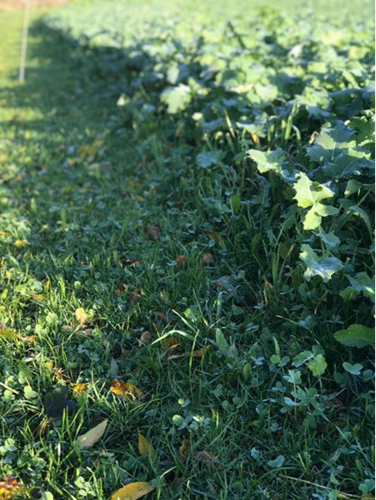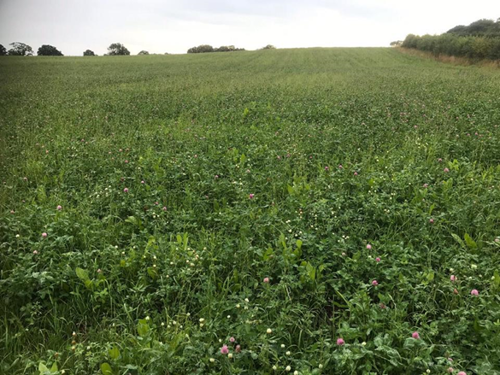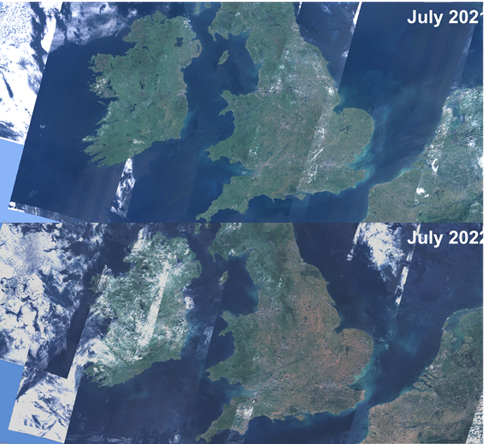Case study: Growing diverse leys
Our recent webinar opened with a case study by Nick Broadwith, a Wensleydale beef farmer with 250 head of cattle on a 150-acre farm with an additional 50 acres of rented land.
Nick uses a four year legume and herb rich ley which he aims to get in as early as possible following spring barley. Forage rape in the mix provides protection to the more delicate herbs leading to strong establishment. The ley is winter grazed by sheep and bounces back the following spring, ready for the cattle.
Access to water proved to be a major challenge on the farm over the summer as the streams dried up. However, the diverse leys proved resilient during the hot, dry weather. While forced to sacrifice some silage fields for grazing, overall the leys performed well. Nick described how the diverse mix contributed to resilience as the species dominance varied with the changing conditions.

Grazing reveals the diverse herbal ley beneath a canopy of forage rape. Photo by Nick Broadwith
Diverse leys and arable
Nick described how he is "turning precision agriculture on its head" as he employs similar tactics in his winter cereals. Rather than applying nutrients to meet the specific needs of the crops, Nick uses a mix of oats and barley to maximize the use of available nutrients. The distribution of each species is self-selecting across the field.
Nick’s faith in diverse leys was evident. “Don’t underestimate these diverse leys,” Nick said, “I’ve been absolutely blown away by what they can do.”

Herbal ley growing well after second cut. Photo by Nick Broadwith
Taking on drought with data
Handing over to the PASTORAL team, Iain Cameron of Environment Systems showed what summer looked like from space, the typical green giving way to vast swathes of brown.
As part of the PASTORAL project, we have observation of over 500 fields. The data shows that reductions in biomass this summer compared to last were evident. While the mood of the webinar turned somewhat somber as we considered the impact of future frequent and extreme weather events predicted, we took comfort from the recovery of grasslands this Autumn.
We could see the effect drought had on grass across the country this summer, but what impact did it have on carbon dynamics?
Vasilis Myrgiotos from the University of Edinburgh explained how PASTORAL is modelling carbon flows based on the changes we see in above ground biomass.

Satellite image of the UK showing the difference between July 2021 and 2022
In summer, grassland generally becomes a carbon sink, locking up more carbon in the soil than is released into the atmosphere. However, in drought years systems lose carbon by either storing less than they do in non-drought years or by becoming sources. This was seen on fields across the PASTORAL network this summer. More carbon was lost in July and August than in the same month last year, but levels returned to previous ranges in September.
By better understanding the biomass and dry matter removed from systems, either by cutting or grazing, we can better understand soil carbon. Soil properties, species composition and management choices all play a huge role in carbon flux. The more we know, the more robust the model estimates may be.
Get involved with PASTORAL
If you’re part of the PASTORAL network and have data to share - whether that be silage yields, plate meter measurements, or soil carbon tests - we’d love to hear from you.
A recording of the webinar is available here. If you’d like to know more about the project visit our website or get in touch at pastoral@envsys.co.uk.
Related news

21 September 2022
Pasture resilience
A summer update from the PASTORAL project

03 March 2023
Pasture resilience
Quality of on-farm data critical in developing new pasture management tool

27 January 2022
Pasture resilience